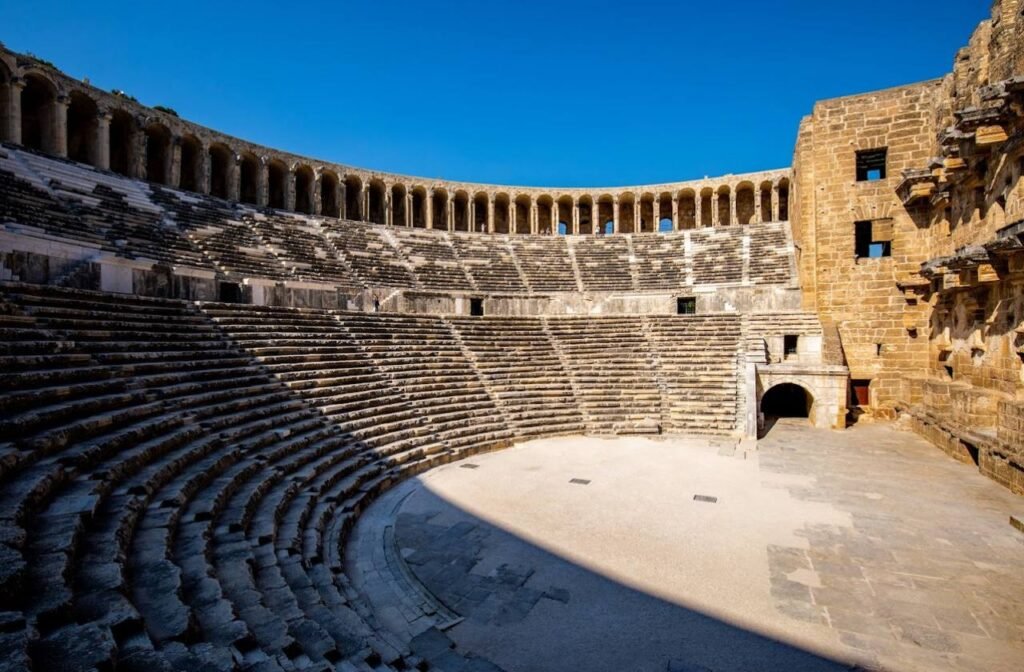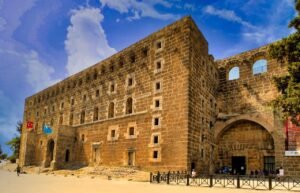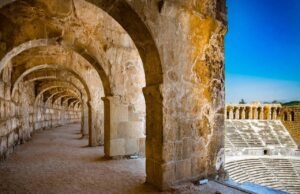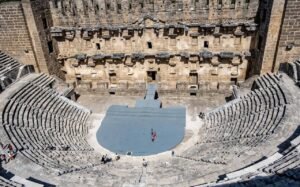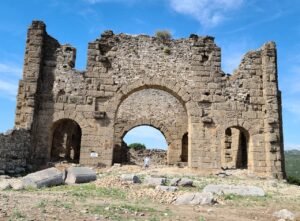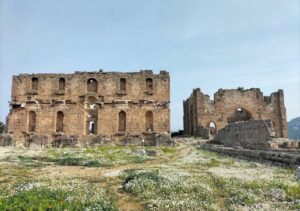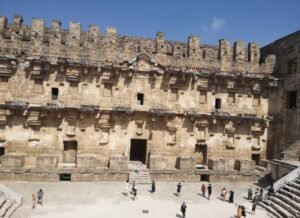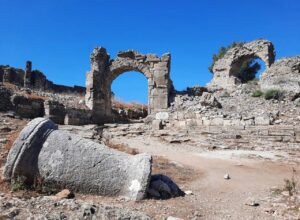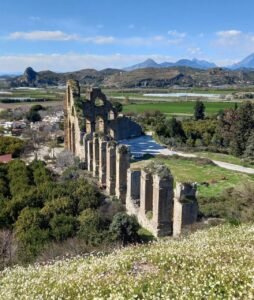Description
Aspendos Theatre: A Timeless Masterpiece of Roman Architecture in Antalya, Türkiye
Nestled in the heart of Türkiye’s Mediterranean coast, just 47 kilometers east of Antalya, lies one of the most magnificently preserved ancient structures in the world — the Aspendos Theatre. This awe-inspiring Roman amphitheater continues to draw travelers, history buffs, and architecture enthusiasts from all corners of the globe. Built in the 2nd century AD, Aspendos Theatre stands as a remarkable testament to Roman engineering and the cultural richness of Anatolia. It is not just a relic of the past, but a living monument where history meets modern performance.
A Glimpse into the Past
Aspendos was an important city in the ancient region of Pamphylia, located near the Eurymedon (Köprüçay) River. The city thrived during the Hellenistic and Roman periods and was particularly renowned for its prosperity through trade and agriculture. However, what truly immortalized Aspendos in the annals of history was its grand theatre, constructed under the reign of Emperor Marcus Aurelius around 161-180 AD.
The theatre was commissioned by the Roman architect Zenon, a local of Aspendos, who dedicated it to the gods and the imperial family. His name is inscribed on the structure, proudly acknowledging his craftsmanship. What makes the Aspendos Theatre especially noteworthy is not only its exceptional state of preservation but also its nearly perfect acoustics and architectural symmetry.
Architectural Brilliance
With a capacity of approximately 15,000 to 20,000 spectators, the theatre is a marvel of design. The semi-circular seating area (cavea) was cleverly built into the natural slope of a hillside, enhancing both the structure’s stability and acoustics. The cavea is divided by a horizontal walkway (diazoma) into two sections, with 39 rows of seating overall.
One of the theatre’s most iconic features is its scaenae frons, the elaborate two-story stage backdrop adorned with columns, niches, and statues. Although some of the decorative elements have been lost over time, the stage structure still conveys a strong sense of Roman theatrical grandeur. The proscenium — the area in front of the stage — is elevated and flanked by majestic arches and entrances (parodoi), emphasizing the ceremonial aspect of Roman performances.
The vaulted corridors and stairways that allow spectators to access different levels of seating also showcase the advanced engineering knowledge of the Romans. Unlike many other ancient theatres that have deteriorated significantly, Aspendos has maintained its structural integrity to an astonishing degree, making it one of the best-preserved Roman theatres in existence.
Acoustics Ahead of Its Time
Perhaps the most impressive feature of the Aspendos Theatre is its acoustic perfection. Even a whisper from the stage can be heard clearly from the highest seats. This was no accident; the Romans were masters of sound dynamics. The theatre's semicircular design, materials used in construction, and the precise angles of seating rows all contribute to this auditory marvel.
Modern-day musicians and performers who have graced the stage of Aspendos often express amazement at how effortlessly their voices or instruments carry through the space without any electronic amplification.
A Venue Still Alive
While Aspendos Theatre is over 1,800 years old, it is far from being a silent ruin. It has been revived in contemporary times as a venue for concerts, ballet performances, and theatrical productions. The Aspendos International Opera and Ballet Festival, held annually since the 1990s, transforms the ancient site into a vibrant cultural hub, blending classical art forms with timeless architecture.
These events offer a rare experience: the chance to witness live performances in the same space where Roman citizens once gathered for drama, music, and political oratory nearly two millennia ago. The contrast of modern lighting and sound with ancient stone creates a mesmerizing ambiance that is hard to replicate anywhere else in the world.
Getting There
Aspendos is easily accessible from Antalya, one of Türkiye's most popular tourist destinations. Visitors can reach the site by car, bus, or as part of guided day tours that often include stops at nearby attractions such as Perge, Side, and the Kursunlu Waterfalls. The journey itself offers scenic views of the Taurus Mountains and fertile plains of southern Türkiye.
The site is open year-round, with extended hours during the summer months. Visitors are advised to wear comfortable footwear, bring water, and, if attending an evening performance, perhaps a light jacket as temperatures can drop after sunset.
Beyond the Theatre
While the theatre is undoubtedly the star attraction, the broader archaeological site of Aspendos includes remnants of a basilica, agora, aqueduct, and stadium. The aqueduct, in particular, is an engineering marvel in its own right, once supplying fresh water to the city from distant sources. Exploring these ruins offers further insights into the daily life and urban planning of ancient Roman society.
A Cultural Legacy
The Aspendos Theatre is more than an ancient monument — it is a bridge between past and present, a symbol of Türkiye’s rich historical mosaic. It embodies the skill, artistry, and vision of ancient civilizations, while still serving a role in modern culture. Whether you are a lover of history, architecture, music, or travel, Aspendos offers a profoundly moving and immersive experience.
In an age where so much of the ancient world has faded into dust, Aspendos stands resilient — a structure carved not just in stone, but in memory.
Location
-
Belkıs, Aspendos Yolu, 07500 Serik/Antalya
